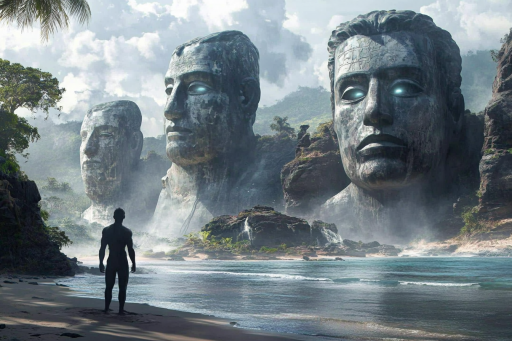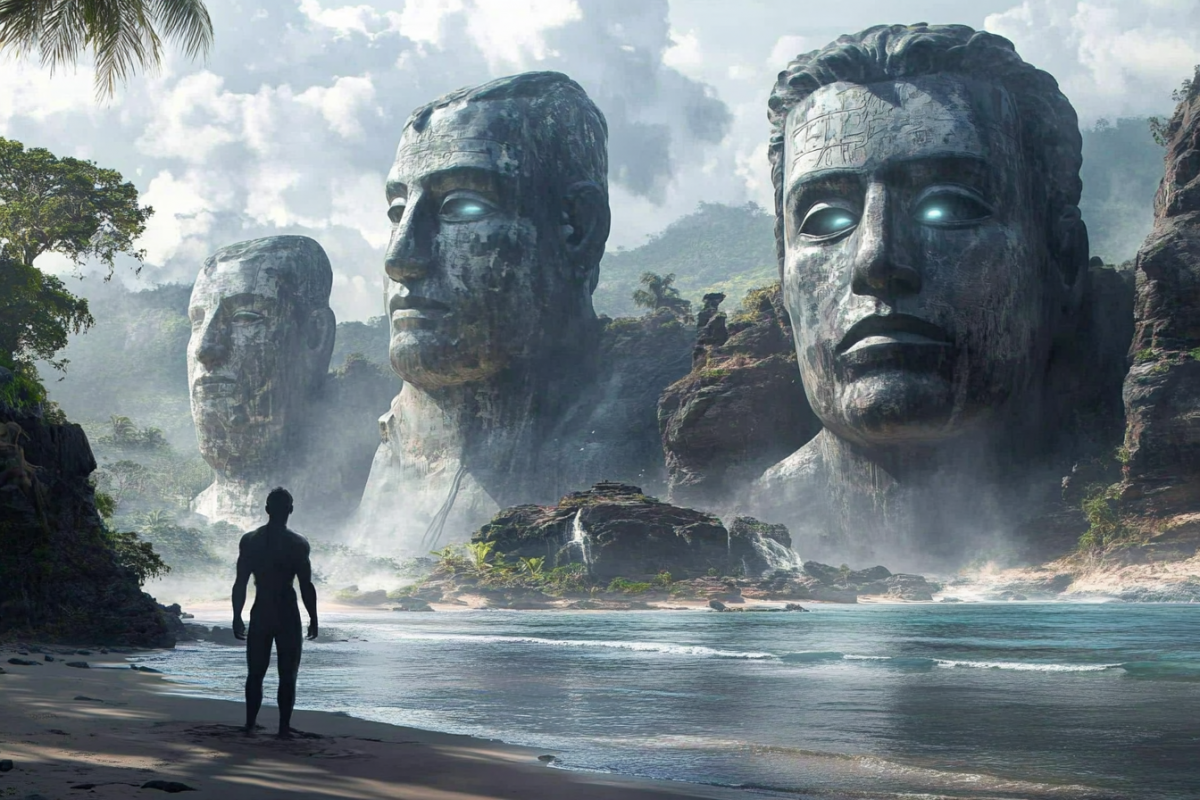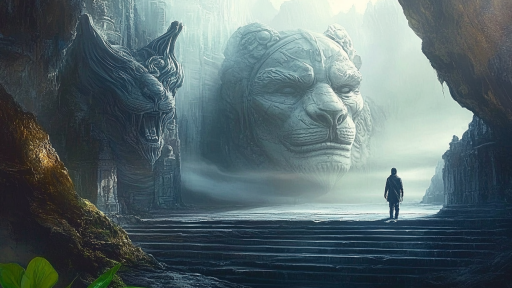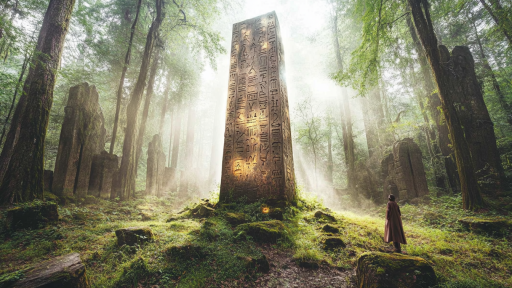
Across the globe stand statues so strange and enigmatic that they challenge our understanding of history, culture, and human ability. Some are carved with impossible precision, others appear where no statue should be, and a few hint at lost civilizations or alien contact. Whether ancient relics or modern mysteries, these figures leave more questions than answers. Step into a world where stone tells a story no one fully understands.
The Moai of Easter Island

Towering over the remote landscape of Rapa Nui, the Moai statues are carved from volcanic rock and weigh up to 80 tons. How these massive figures were transported across the island without modern tools remains a mystery. Some believe they were moved using forgotten techniques, while others speculate supernatural or extraterrestrial intervention. Their silent, solemn faces still gaze inland, guarding secrets that time refuses to reveal.
The Shigir Idol

Discovered in a Russian peat bog, the Shigir Idol is carved from larch wood and is estimated to be over 11,000 years old—twice as old as the Egyptian pyramids. Its surface is covered in cryptic geometric patterns and faces that seem to represent spirits or gods. No one knows its true purpose, but some researchers think it encodes a lost language or cosmology. How such a complex artifact survived for so long is a mystery in itself.
The Olmec Colossal Heads

Scattered across Mexico are massive basalt heads, some standing over 10 feet tall, crafted by the Olmec civilization. Their features are strikingly distinct, leading some to speculate they represent real individuals—possibly rulers or deities. Yet the tools and methods used to carve and transport these enormous stones from distant quarries remain uncertain. The heads seem to stare through time, daring us to understand a forgotten age.
The Underwater Yonaguni Monument

Off the coast of Japan lies a submerged structure that appears to be carved steps, terraces, and platforms. Some believe the Yonaguni Monument is a natural formation shaped by ocean currents, while others argue it’s the remnant of an ancient sunken civilization. Among the formations are massive “faces” carved into stone that resemble statues. If man-made, it could rewrite the history of human settlement in Asia.
The Antikythera Youth

Recovered from an ancient shipwreck off the coast of Greece, this bronze statue is astonishingly lifelike and preserved. Believed to be a representation of an unknown god or athlete, the figure’s detail suggests an advanced understanding of anatomy and bronze casting. Yet little is known about who made it or why it was aboard the ill-fated ship. Its presence underwater adds an eerie mystique to its already captivating form.
The Statue of the Inca God Viracocha

Hidden high in the Andes is a mysterious statue carved into rock, thought to represent Viracocha, the Inca creator god. The figure appears out of place and time, with features that some believe don’t match traditional Incan art. Legends say Viracocha emerged from Lake Titicaca to bring order to the world, and this carving may be a tribute to that event. But the statue’s true age and origin remain hotly debated.
The San Agustín Stone Figures

In the Colombian highlands lie hundreds of strange statues depicting humans, animals, and hybrid beings. Some have fanged mouths and bulging eyes, suggesting a connection to shamanic or supernatural rituals. No one knows who built them, or why they were placed in burial mounds and ceremonial centers. The figures seem to stand as eternal guardians of a forgotten spiritual world.
The Temehea Tohua Statues of Nuku Hiva

On a remote island in French Polynesia stand statues with oddly futuristic features—large heads, wide eyes, and elaborate helmets. Some resemble beings from science fiction more than ancient deities. While attributed to the Marquesan culture, their unique appearance has fueled speculation of ancient alien contact. Whether symbolic or literal, these statues challenge assumptions about early Polynesian belief systems.
The Ain Dara Temple Footprints

Outside a ruined temple in Syria are two giant footprints carved into the stone floor, each over three feet long. Some scholars believe they were made to represent the presence of gods entering the sanctuary. But the scale of the prints, and their solitary placement, remains puzzling. Were they metaphorical impressions of divine beings—or something else entirely?
The Ubaid Lizard Statues
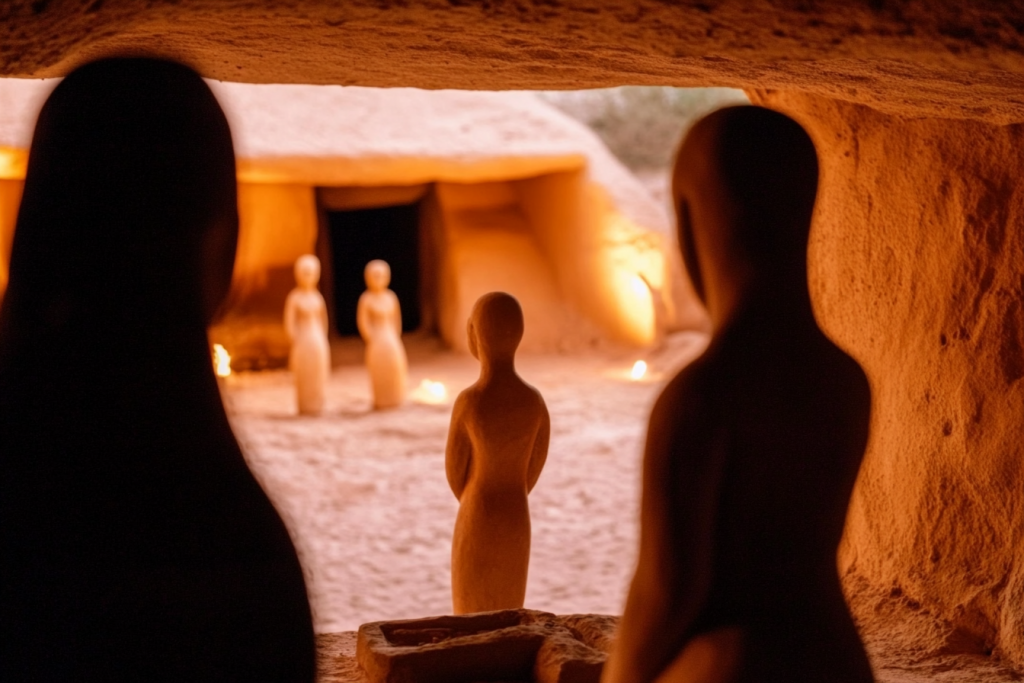
Unearthed in ancient Mesopotamia, these small statues depict humanoid figures with distinctly reptilian features—elongated heads, slitted eyes, and scaled bodies. Dating back over 7,000 years, they’ve led to a variety of theories, from symbolic fertility figures to alien hybrids. Their unsettling appearance is unlike anything else from the era. What inspired these eerie forms remains one of archaeology’s strangest questions.
The Terrifying Idol of Gobekli Tepe

Among the world’s oldest known temples is a statue that has baffled archaeologists—an abstract humanoid figure with hands folded in front and a blank, haunting expression. Found at Göbekli Tepe in Turkey, it predates writing and the wheel, yet displays advanced symbolic thought. Some believe it represents a forgotten god or ancestral spirit. Whatever its role, it’s a chilling reminder of how much we’ve yet to understand about our ancient past.
Carved in Mystery, Etched in Stone

Statues have long served as monuments to power, faith, memory, and mystery. But some of these creations reach beyond known history, challenging what we think we know about ancient peoples—and perhaps ourselves. Whether shaped by human hands or something stranger, their existence forces us to question the limits of ancient knowledge. The truth may be lost to time, but the questions they raise endure.

